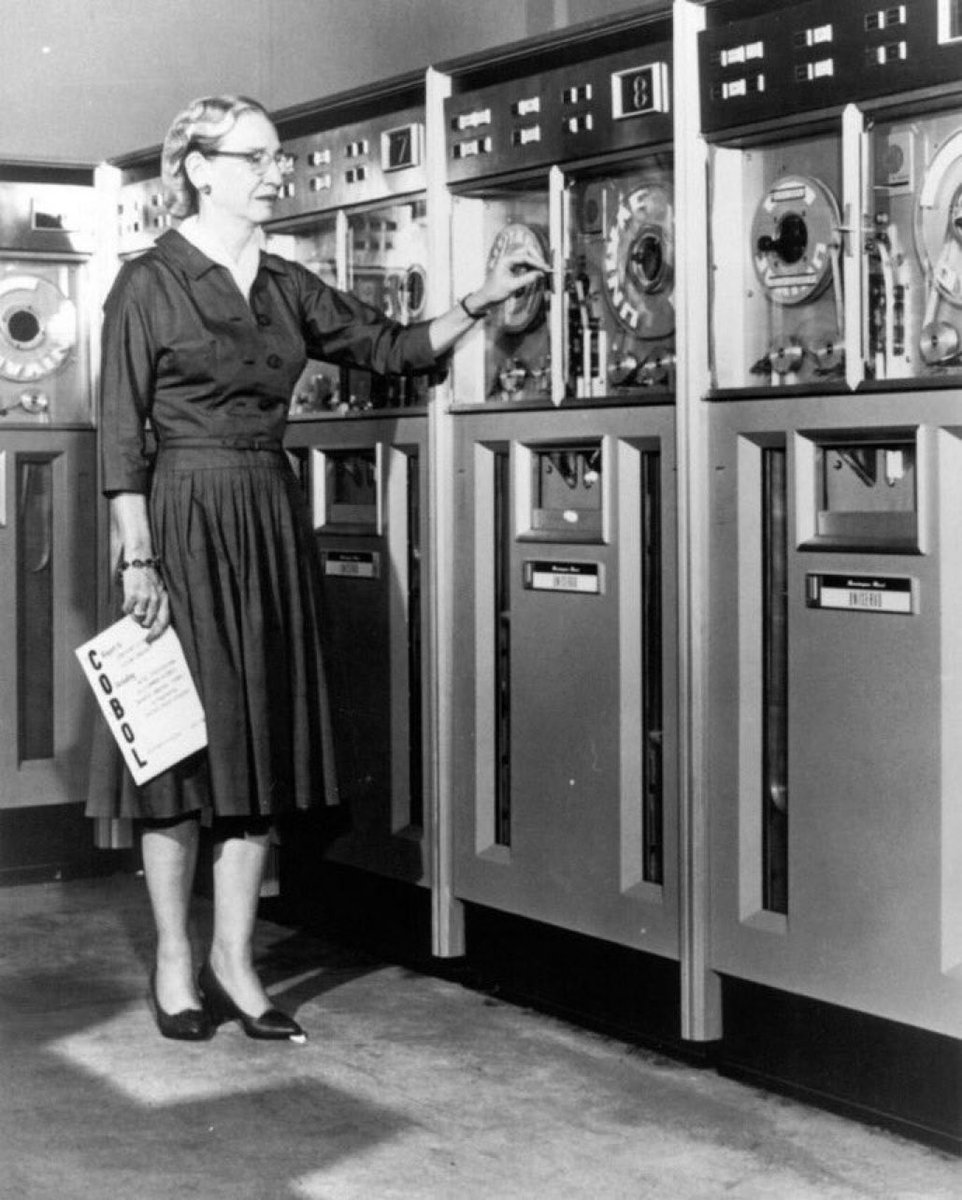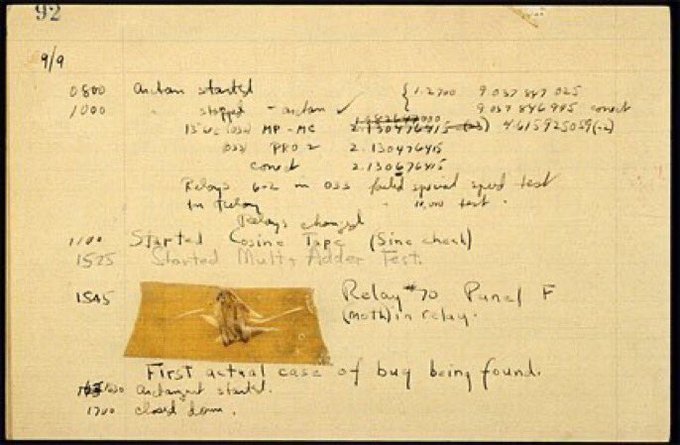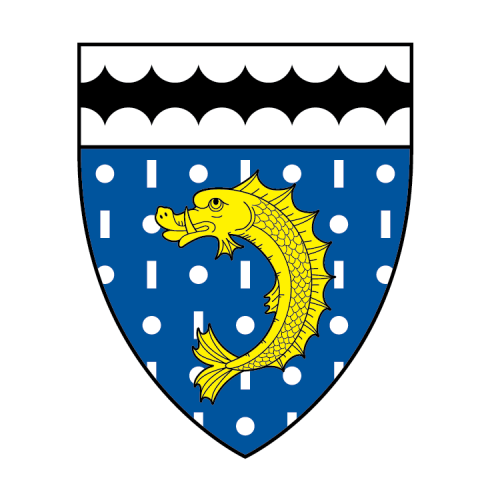Computer science pioneer and United States Navy rear admiral Grace Hopper was born #OTD in 1906. As far as I’m aware, she is the only person who has both a supercomputer and a US Navy destroyer named after her.
Image: Computer History Museum
Image: Computer History Museum
As early as 1949, Hopper was encouraging members of her team at Eckert-Mauchly Computer Corporation to share and reuse blocks of code for the UNIVAC-1.
They soon developed what Hopper herself referred to as the “first compiler,” the A-O. It allowed programmers to reference call numbers that fetched routines from pre-assembled blocks of code, as well as translate some symbolic code into machine language.
Before that, computers required dedicated engineers to translate what users wanted into machine/ready instructions. This was an important early step in the development of understandable programming languages that made computers useful outside CS, math, and the hard sciences.
A few years later, Hopper went a step further and proposed a programming language based on English language statements. Remington-Rand (they had acquired EMCC in 1950) didn’t think it sounded feasible, but Hopper and her team developed it anyway.
They developed the B-0 (Business Language v 0) compiler, which later became known as FLOW-MATIC. Can’t say for certain, but I’m almost positive that was also the name of a 1994 Gang Starr album.
https://en.wikipedia.org/wiki/FLOW-MATIC
https://en.wikipedia.org/wiki/FLOW-MATIC
So Grace Hopper is very directly responsible for some major innovations in the way we use computers. But if you see other tweets about her today, you are likely to see a few things attributed to her that she is *not* responsible for. Let me explain.
It is true that on September 9, 1947, Hopper or a member of her team pulled a moth from one of the relays in Harvard’s Mark II computer and taped it in their logbook. But she did not invent the terms “bug” or “debugging.”
Image: Smithsonian
Image: Smithsonian
The term “bug” goes back at least as far as Edison. And it turns out, “debugging” was also already in use –– the technicians who installed the Mark II a few years earlier were using it. Here’s a fun history of these terms:
https://ieeexplore.ieee.org/document/728224?tp=&arnumber=728224&isnumber=15706
https://ieeexplore.ieee.org/document/728224?tp=&arnumber=728224&isnumber=15706
It’s probably fair to refer to the incident in Hopper’s log book as the first recorded occurrence of an actual bug in a computer, but claiming she originated the terms “bug” or “debugging” is wrong. By the way, the log book itself is at the @smithsonian: https://americanhistory.si.edu/collections/search/object/nmah_334663
Another common mistake — one I’ve made myself — is the claim that Hopper “invented” COBOL. She was one of two technical advisors on one of the CODASYL committees, and some of her team members helped define the COBOL specs, but she didn’t invent the language.
However, FLOW-MATIC was a significant influence on COBOL. One of the CODASYL committee members said that without FLOW-MATIC “we probably never would have had a COBOL.”
Hopper was known for the accessible analogies and examples in her public talks. Here she explains the concept of a nanosecond (10⁻⁹ s) with a bit of wire c x 1 nanosecond long. The speed of light is c = 3 x 10¹⁰ cm/s, so the wire is about 30 cm long.
She uses the same demo in this 1986 appearance on Late Night with David Letterman. Listening to her is an absolute delight. Take a few minutes to watch the interview. https://www.dailymotion.com/video/x35dsz7
"Our first guest tonight has credits that are far too impressive for any guest on this program."
As I mentioned earlier, Grace Hopper achieved the rank of rear admiral in the US Navy. But before she was in the navy, she was a professor. She finished her math PhD at Yale in 1934, while already working as an instructor at Vassar. She became associate professor there in 1941.
Hopper tried to enlist in the Navy when she was 34, but was rejected for active duty because she was too old. The pull to fight Nazis was strong, though, so she left her job as a professor in 1943 to enlist in the Navy reserves. They put her to work on the Mark I at Harvard.
(She told Letterman that it had to be the Navy, because her grandfather had made rear admiral and if she had joined another branch he would’ve risen from the grave and haunted her.)
In 1966, at the age of 60, she took her mandatory retirement from the Navy. But they called her back up to what would be an indefinite assignment to active duty in 1967. She retired again in 1971, and was called back up a second time in 1972!
In 1983 she was promoted to the rank of Commodore by special appointment, and Congress allowed her to remain on active duty despite the fact that she was well past mandatory retirement. In 1985, the rank of Commodore was changed to Rear Admiral. Hopper finally retired in 1986.
In a funny twist, she was the oldest active-duty US Navy officer when they finally let her retire. They held her retirement service on the USS Constitution, the oldest ship in the fleet. After initially rejecting her in 1941 for being too old.
Anyway, Grace Hopper has both a supercomputer ( https://www.nersc.gov/news-publications/nersc-news/nersc-center-news/2010/grace-hopper-powers-science-on-nersc-s-new-cray-xe6/) and an Arleigh Burke-class guided missile destroyer ( https://en.wikipedia.org/wiki/USS_Hopper ) named after her. That is an unusual combination of things to have named after you!
When Hopper accepted the National Medal of Technology and Innovation in 1991 she said the accomplishment she was most proud of, out of everything she had done throughout her remarkable career, was "all the young people I’ve trained over the years." https://news.yale.edu/2017/02/10/grace-murray-hopper-1906-1992-legacy-innovation-and-service
Grace Hopper passed away on New Years Day of 1992. In 2016, President Obama posthumously awarded her the Presidential Medal of Freedom for contributions to computer science. And in 2017, Yale renamed its Calhoun College as Grace Hopper College. https://news.yale.edu/2017/02/11/yale-change-calhoun-college-s-name-honor-grace-murray-hopper-0
I like very much that even after passing away, Hopper managed to take down a white supremacist and slave owner on her way out.
The Grace Hopper College coat of arms references both her time in the navy (the dolphin and wave-like pattern) and her contributions to computer science (the vertical bars and circles representing ones and zeroes.)
https://gracehopper.yalecollege.yale.edu/college/coat-arms
https://gracehopper.yalecollege.yale.edu/college/coat-arms
Happy 114th birthday to “Amazing Grace” Hopper. Here’s the Google Doodle from her 107th birthday in 2013.
Image: Google Doodle team
Image: Google Doodle team
And here’s my at-the-time 3yo sporting Grace Hopper right over her heart on @SMLXist’s #ThatOtherShirt (which at the time fit her more like a dress).

 Read on Twitter
Read on Twitter





